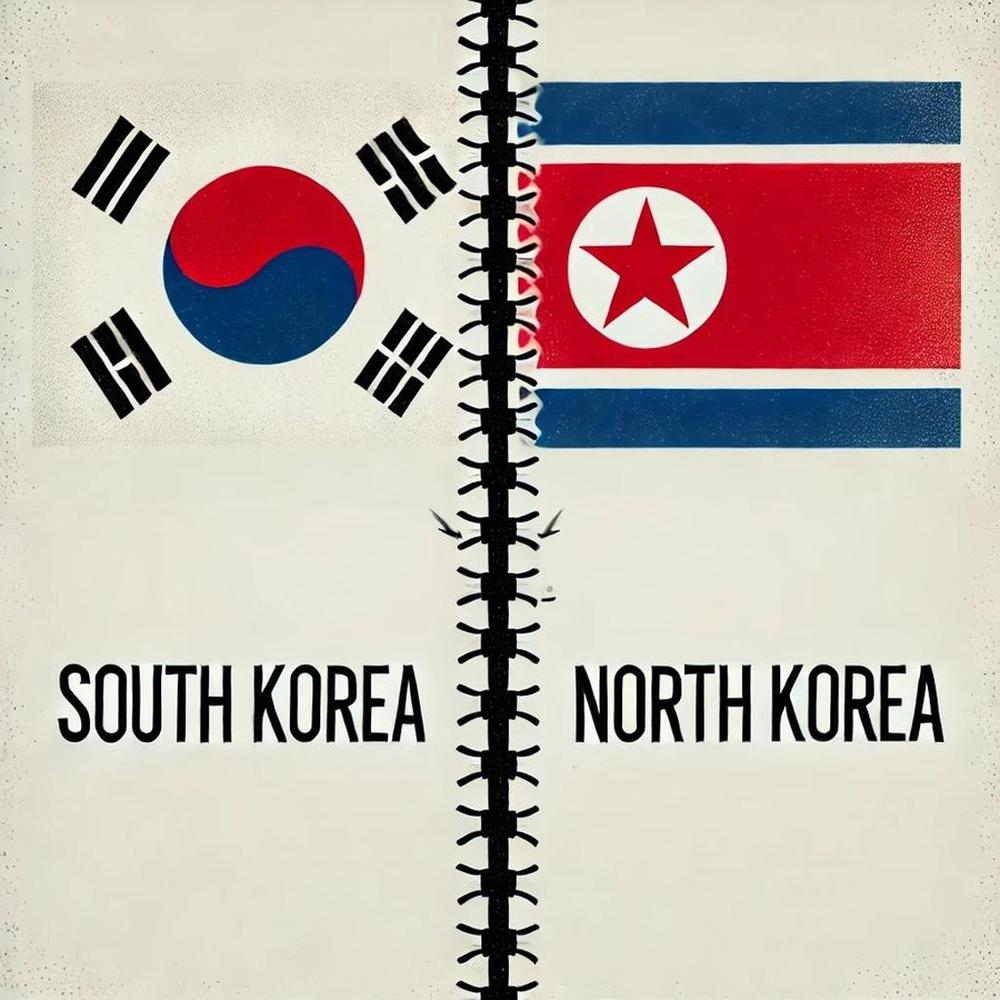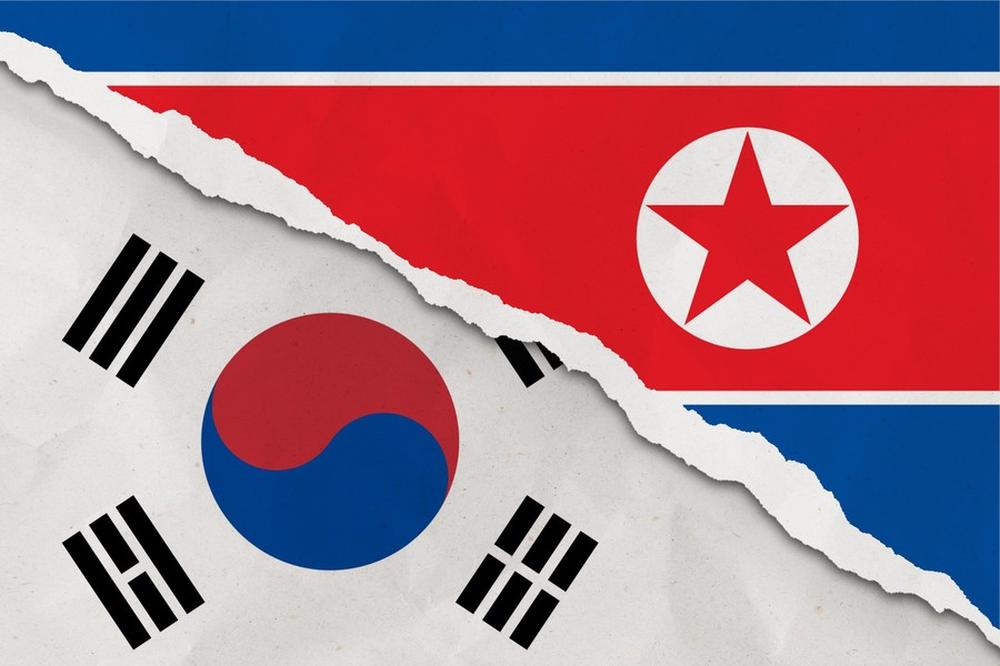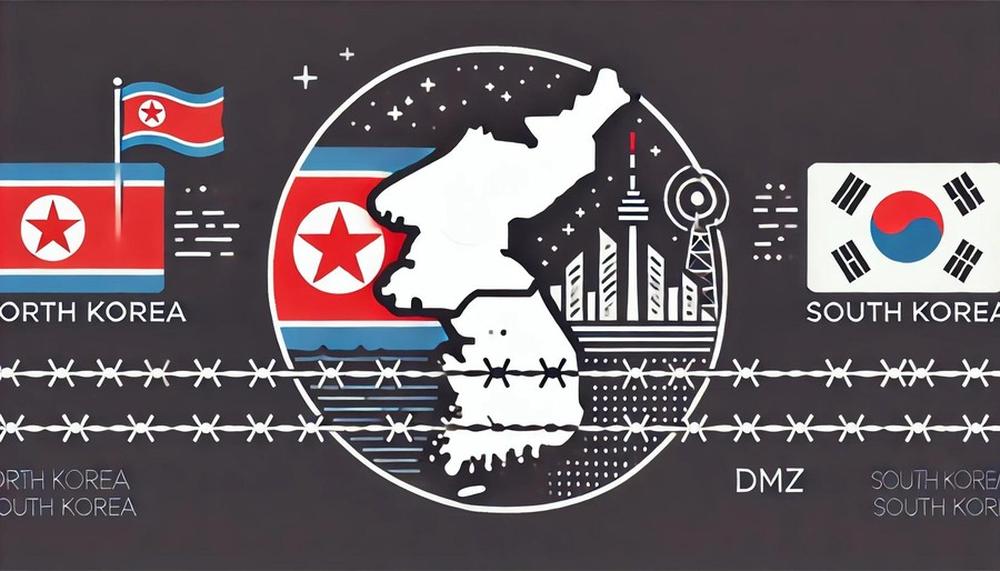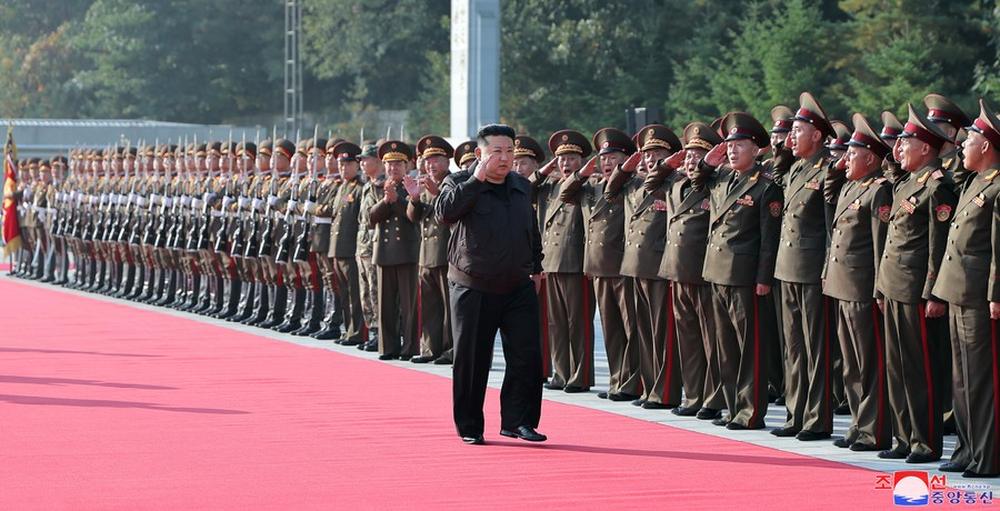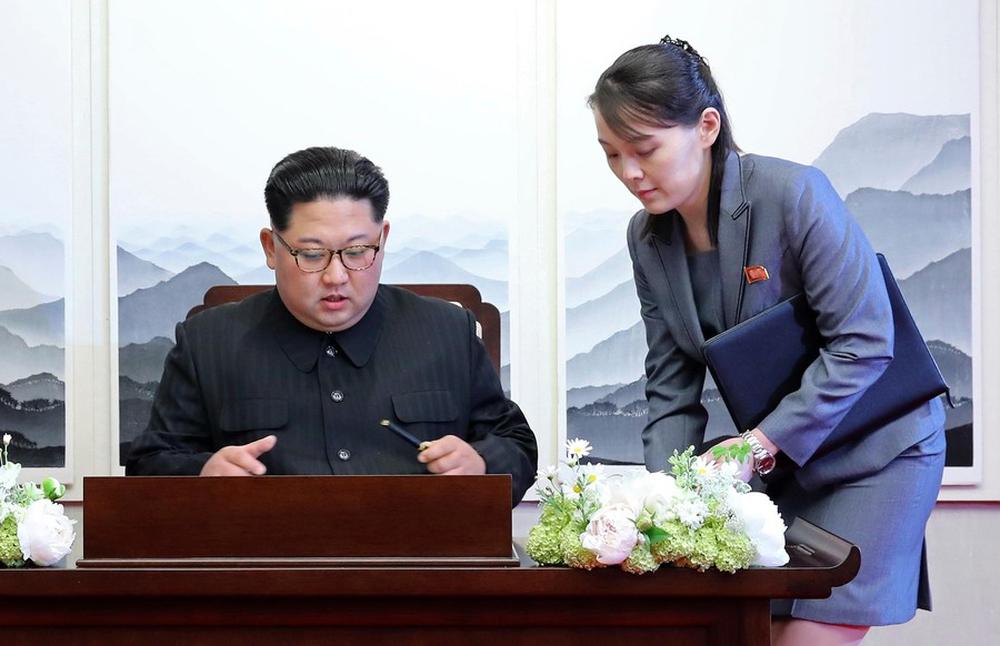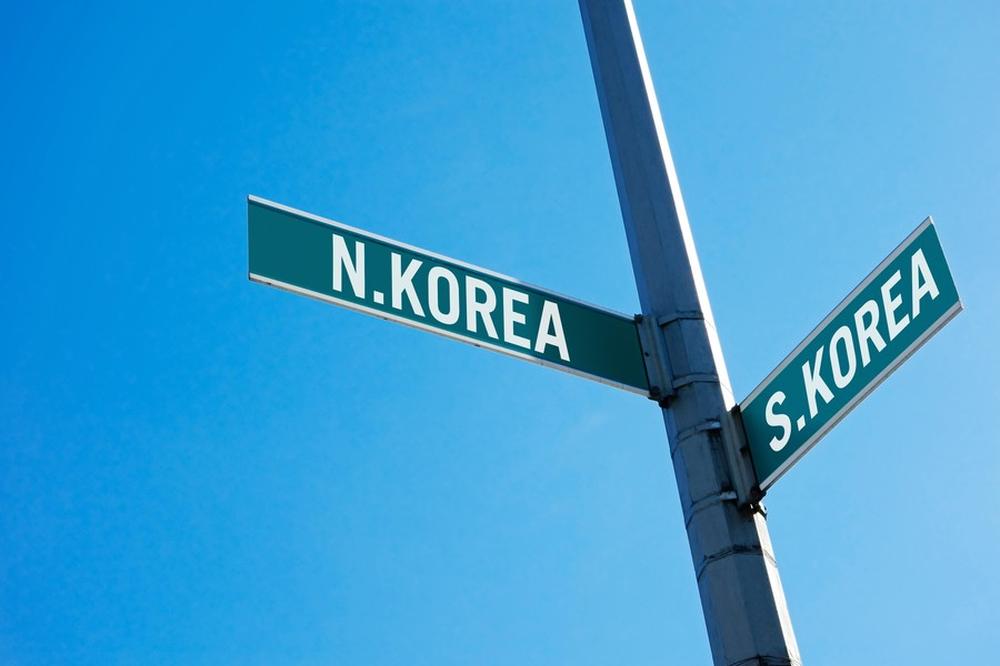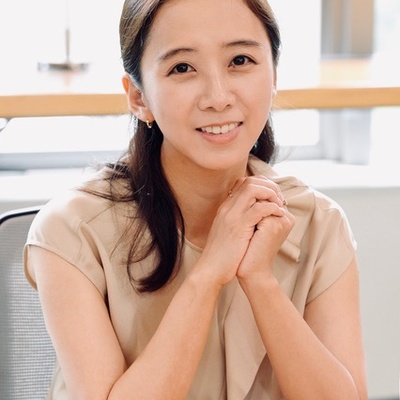
- #Inter-Korean Relations
- #North Korea
- #Security & Defense
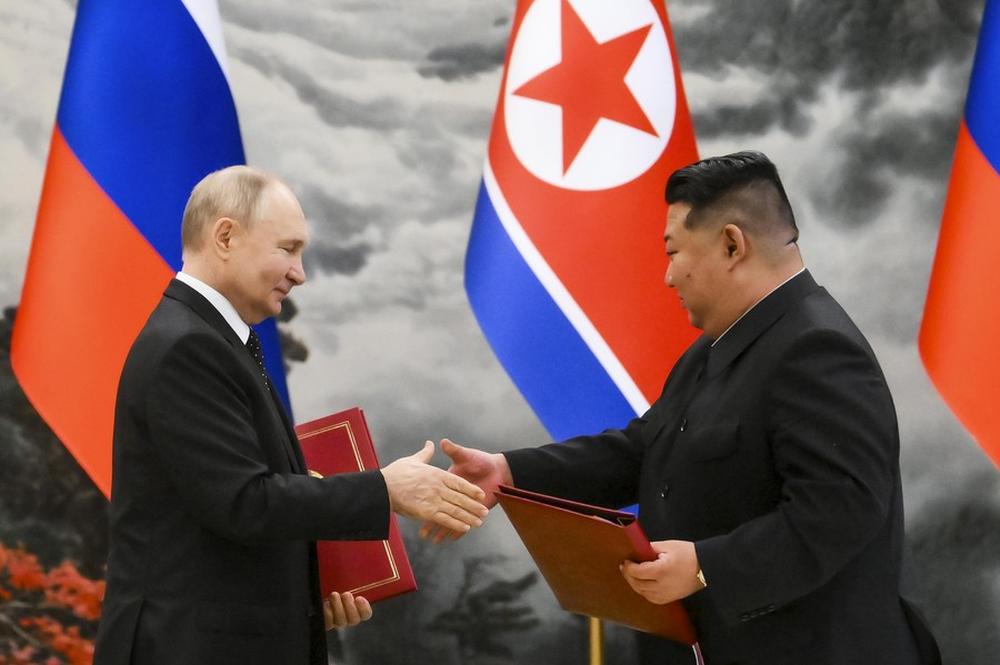
▶ North Korea's "Two States Theory" and Break with South Korea: Kim Jong Un's "Two States Theory" reframes South Korea as a "hostile state," marking a decisive ideological and physical separation from the South, enforced through constitutional amendments, militarized border fortifications, and intensified anti-South indoctrination.
▶ Strengthening Ties with Russia: North Korea’s alignment with Russia, including the deployment of elite troops to support Russia in Ukraine, has escalated military collaboration and may yield advanced technologies, compensating North Korea’s strategic needs amid its five-year plan.
▶ Strategic Response by ROK-U.S. Alliance: The ROK-U.S. alliance must bolster deterrence through military readiness, diplomatic engagement, and potential NATO-AP4 coordination, while considering high-level U.S.-China talks to manage North Korea's evolving relationship with Russia.
This article argues that Kim Jong Un’s “Two States Theory” did not emerge in a vacuum. It examines the geopolitical context—particularly North Korea’s strengthening military ties with Russia—that led Pyongyang to sever all physical and psychological channels with South Korea and designate it as a “hostile state.” North Korea's shift towards Russia and its distancing from South Korea are not coincidental but closely interrelated.
Pyongyang’s Rupture with Seoul: Severing Physical and Psychological Ties
Kim Jong Un introduced his so-called “Two States Theory” earlier this year. In his address to the 10th Session of the 14th Supreme People’s Assembly (SPA), he declared that the Republic of Korea (ROK) is the “most dangerous and primary enemy state,” rejecting the notion of South Korea as a homogeneous half or a subject of peaceful reunification. He further asserted his intent to occupy and subjugate ROK territory in case of contingency. He also stated, “We will strictly implement phased measures to thoroughly separate all conditions of North-South connection in the border area.”
In response to Kim Jong Un’s call for a reset in inter-Korean relations, North Korea amended its constitution in October to categorize South Korea as a “thoroughly hostile state.” This constitutional change underpins other subordinate laws, policies, and daily measures, meaning that unless amended, every policy action must comply with its content, and no action can contradict it under the current framework.
For instance, the North Korean military has been clearing trees and barren land along the frontline, laying conditions for intensive surveillance and planting tens of thousands of new mines. Additional activities include reinforcing tactical roads and installing unidentified structures, likely anti-tank barriers. The bombing of railroads and roads along the Gyeongui and Donghae Lines, which occurred shortly after the October 8 constitutional amendment at the SPA, was unsurprising and part of the “phased” measures Kim Jong Un previously referenced.
Although physical separation from South Korea has been attempted before, this level of ideological and psychological division is unprecedented. From moves to abolish inter-Korean organizations to changing the lyrics of the national anthem, the regime has erased any remnants of viewing South Korea as North Korea’s other half in the population’s political and cultural life. Intensified education and indoctrination programs will further cement South Korea as North Korea’s primary adversary.
While North Korea has heightened its threat perception towards the South and bolstered its defensive posture—once relaxed by prior inter-Korean military agreements—this does not necessarily signal plans for future offensive provocations on the peninsula. Especially with the phrase “fortifying the southern border on a permanent basis,” these measures indicate an intent to prevent South Korean elements from infiltrating North Korean mindsets and territory, rather than initiating direct attacks on South Korea.
Pyongyang’s Strategic Partnership with Moscow: Sending Troops for Russia’s Victory in the War in Ukraine
Why would Kim Jong Un go so far as to abolish unification-related institutions and amend the North’s constitution when maintaining the concept of kinship with the South might relatively lull the US-ROK alliance into complacency? Moreover, given that North Korea has shared a border with South Korea for over 70 years and its people have been exposed to South Korean culture for decades, there must be other reasons for severing ties now.
One possibility is that this stringent tightening of internal controls is a preliminary measure to strengthen cooperation with Russia, especially given the recent deployment of North Korean elite troops, known as the "Storm Corps." This decision goes beyond munitions delivery and ranks among Kim Jong Un’s riskiest moves, as it poses significant internal and external threats to his regime. Should the North Korean populace become aware of the troop deployment, it could lead to growing resentment and a sense of betrayal among younger generations and their parents. Despite Kim Jong Un's people-oriented rhetoric and focus on youth, his actions suggest he is neglecting his citizens’ lives and well-being. Furthermore, with some of his elite troops now stationed in Russia—and potentially more to follow—he has fewer resources to manage potential armed conflict.
In exchange for these risks and sharing core military forces, Pyongyang is likely to receive substantial compensation from Russia. Typically, Moscow has hesitated to transfer advanced technology to other countries, including China and North Korea. However, in its current desperate state, Russia may view North Korea’s deployment as invaluable, especially given its high casualty rates and challenges in retaining military personnel. Consequently, Russia may transfer advanced technologies North Korea desperately needs, such as those related to MIRV (multiple independently targetable reentry vehicles), SSBN (nuclear-powered ballistic missile submarines), hypersonic technology, and spy satellites.
North Korea is currently focused on achieving its five-year plan, outlined at the Eighth Party Congress in 2021, with a 2025 deadline. The pandemic disrupted progress, limiting resource acquisition and making 2024 a critical year for meeting these objectives. Given this tight timeline, North Korea must optimize its external networks to secure essential resources and concentrate on attainable goals, likely positioning Russia as a strategic partner in its efforts.
What the ROK and the U.S. Should Do
Pyongyang may not intend to start a war or escalate tensions on the peninsula in the short term, despite what some commentators argue. However, its cumulative actions pose a persistent threat to South Korea, necessitating a stronger deterrence response over the longer term. Moreover, the ROK-U.S. alliance should closely monitor Russia’s war in Ukraine to counter any strategic advantage that North Korea and Russia might potentially gain from North Korean troop deployments.
First, Seoul, with Washington’s support, must prepare for unintended escalation and maintain a strong advantage over North Korea. Simultaneously, South Korea should affirm its commitment to North Korean human rights and denuclearization while staying open to engagement to preserve peace and mitigate conflict risk if North Korea is receptive.
Second, regarding North Korea’s actions in the border area, the UNC (United Nations Command) should be utilized effectively. South Korea maintains close communication with both the UNC and its member states, allowing it to manage the situation more effectively while avoiding direct clashes with North Korea.
Third, the ROK-U.S. alliance should leverage this opportunity to coordinate a NATO-AP4 response that recognizes the North Korean threat as a shared global concern. The implications of Pyongyang’s deployment of troops to Russia should be underscored, with an emphasis on how North Korea’s increasing military support to states in the Middle East and Africa could also pose a threat to Europe.
Fourth, the ROK-U.S. alliance should enhance deterrence against North Korea’s strategic weapons, possibly supported by Russia. More diverse scenarios for TTX (Table Top Exercises) and joint military exercises could be developed, assuming North Korea utilizes a wider range of strategic weapons or that Russia intervenes in a peninsula contingency.
Finally, in the wake of the U.S. presidential election, South Korea should explore initiating a high-level dialogue between the U.S. and Chinese leaders concerning stability on the Korean Peninsula. China shares an interest with the ROK and the U.S. in containing the rapidly evolving North Korea-Russia relationship. Even a symbolic meeting, without concrete outcomes, could provoke unease in North Korea and Russia.

Dr. Kyung-joo Jeon is a research fellow at the Center for Security and Strategy at the Korea Institute for Defense Analyses (KIDA) in the Republic of Korea. Her research at KIDA focuses on North Korean military and political issues, as well as the ROK defense planning. From July 2023 to July 2024, she served as a visiting fellow at the National Defense University (NDU) and concurrently as a visiting expert at the United States Institute of Peace (USIP). In April 2024, she joined the advisory board to the Director of National Security in the Office of the President of the ROK.
